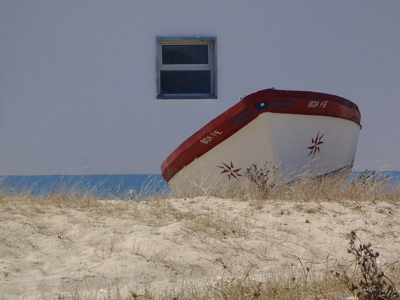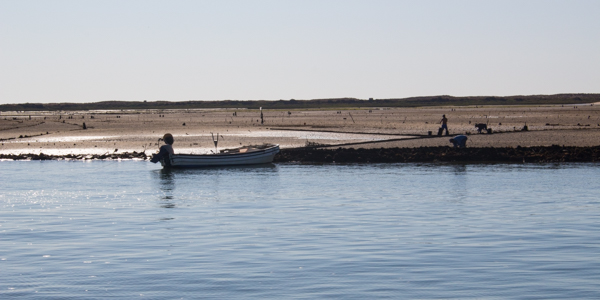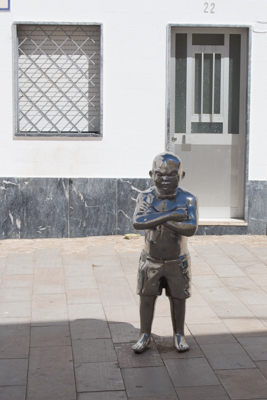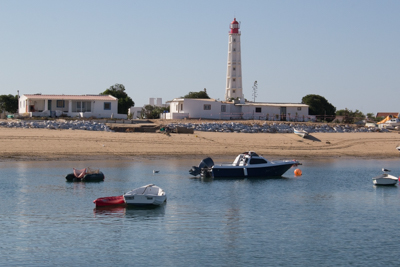 | 3 rd to 7 th of September 2017 - Ria Formosa |
 |
| Crew : | Andy and Helen | |
| Destinations : | Ilha da Culatra. | |
| Distance : | 38 miles |
We left our anchorage at first light around 0700. By 0800 we were sailing under main, mizzen and Genoa, making 6-7 knots and getting excited. It didn't last long and the wind soon died to nothing. There was a fair bit of swell coming from the east though the water was smooth. We had dolphins a few times but they didn't hang around. We motored across the large bay with well known Algarve holiday resorts to port. We passed a large tuna farm before aiming for the man made entrance into the lagoon which takes you between two long islands and up to the city of Faro and small town of Olhão. The tide in the entrance flows quite fast, however once in it settles down quickly despite all the drying patches. There are lots of places to anchor behind the Island of Culatra which is where we went.
We went ashore to Culatra which is part of a natural park and on an island. There are no cars, just the odd tractor and lots of fishing boats. On the seaward side there is a pristine beach which, even with day trippers, remains deserted for the most part except for a small stretch at the end of the boarded walkway from the village. The island is full of migrant birds in the autumn and spring so we were slightly early but we did see birds we haven't seen before: Sanderlings, crested larks and little terns amongst a few others.


CULATRA
On returning from our walk and swim on the seaward side of the island, we found our tender just above the waterline. The wind had picked up and there were a few white caps in the lagoon. Our boat was anchored a little way off shore and it felt quite rough on our little boat. However, our folding rib and electric outboard got us back safely to Speedwell.

We stayed a few nights at anchor, visiting Olhão by ferry to pick up some groceries in the market and walk the Moorish streets. The ferry took an hour to get us there as it was low water and we had to pass through channels between the drying banks. Most of the shallow lagoon is taken up with shellfish farms. At low water the sand banks are full of people harvesting the shell fish, which we think were mainly oysters.




OLHÃO
© Copyright